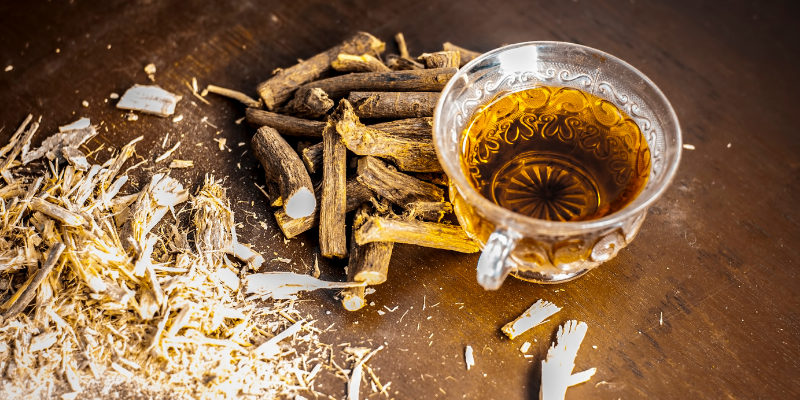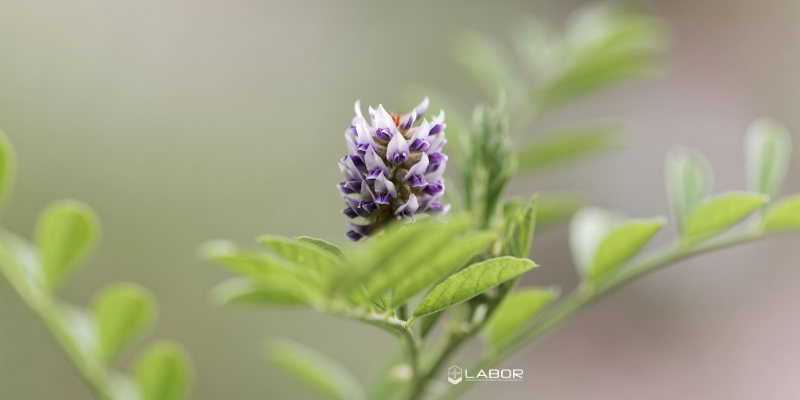Licorice (Glycyrrhiza) is a genus of perennials from the papilionaceae family. These plants are found in Europe and Asia, several species can be found in Australia and on the American continents. Currently, the largest suppliers of licorice are Turkey, Spain and Italy, but also Russia and China. Italians believe that the best licorice comes from southern Italy, Calabria. There is even a licorice museum in the Calabrian town of Rossano (museodellaliquirizia.it.)
In medicine and as a food plant, mainly smooth licorice (Glycyrrhiza glabra) is used.
Licorice was known and used for medical purposes since antiquity. In Egypt, Greece and Rome, it was considered a very effective drug. The Chinese also knew licorice and used its medicinal properties. In ancient times, the licorice root was also credited with magical powers.
Licorice was introduced to European medicine in the 12th century. Its root was boiled and the concentrated broth was used to form sticks called licorice.
In the 16th and 17th centuries, the botanist Hieronymus Boch and Pierandrea Matthioli, the personal medic of the Duke of Trento, Bernardo di Cl?s, recommended and used licorice as an expectorant and in the treatment of diseases of the kidneys, bladder, stomach and liver.
Currently, licorice is also widely used and its popularity is evidenced by the fact that scientists from the University of Würzburg in Germany and representatives of the WWF recognized it as the plant of the year 2012.
Licorice root (Radix glycyrrhizae or, much more often, extract of this root (Extraactum glycyrrhizae) is used as pharmaceutical raw material.

Chemistry
Licorice root contains 2.5 – 4.0% pure glycyrrhizin.
Glycyrrhizin is a triterpenic compound belonging to the group of saponins. It has a characteristic, sweet taste (it is about 50 times sweeter than sugar). In addition, the raw material contains many other chemical compounds, such as liquiritin, resin compounds and bitterness (giving the raw material a bitter taste) as well as carbohydrates (glucose and sucrose), mannitol, starch and small amounts of essential oil.
Usage
Licorice root preparations are used in diseases of the respiratory tract as a soothing agent for irritation and inflammation and as an additive that improves the taste. Much less often they are used as a diuretic and relaxant. In the past, it was used to treat stomach ulcers in non-bleeding ulcers. It has also been found that licorice inhibits the secretory activity of the stomach by reducing the amount of gastric juices secreted without affecting the concentration of hydrochloric acid or enzymatic activity.
The beneficial effects of licorice extract on the wound healing process have also been reported.
The beneficial effects of licorice extract on the wound healing process have also been reported.
As a curiosity, it can be added that, according to modern research, licorice extract may inhibit the replication of coronaviruses.
Licorice in the kitchen
We can use licorice roots as a flavouring additive to fruit juices, syrups, desserts, cakes and drinks. However, it should be remembered to use it sparingly. When added in excess, it will give the dishes an unpleasant, bitter taste (the content of bitter and resinous compounds!).
Licorice candies are popular in many countries. You can also buy them in Poland under the name of śląskie kopalnioki. Liqueurs (eg Sambuca) or licorice liqueurs are also very good, especially popular in Italy. The root of this plant has a strong stimulating effect, so it can successfully replace coffee, effectively increasing blood pressure. Licorice also supports weight loss as it stimulates the digestive system and speeds up digestion.
AUTHOR: Dr n. farm. Andrzej Tarasiuk




